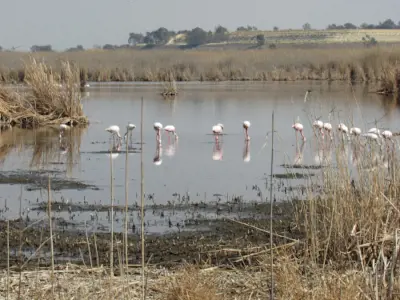While mines have for decades had to comply with the prevailing legislated environmental regulations, the new Global Industry Standard on Tailings Management (GISTM) has shifted the ground. Responding to a new world of expectations, the standard demands a more systematic integration of environmental monitoring into the tailings management system.
This means that technical reporting on tailings storage facilities (TSFs) must now include an environmental component, to improve the way that tailings storage risks are managed. While the stability and integrity of the structure are key to TSF safety concerns, risks like seepage and contamination plumes are also highly relevant to both safety and environmental sustainability. While environmental reporting in TSF quarterly reports is improving, the GISTM demands that action plans are developed, and that these are proactively implemented in an integrated way.
The GISTM calls for environmental – along with social and local economic – impacts to be assessed on an ongoing basis, so that any material changes can be addressed using best practices in adaptive management. Effective monitoring is therefore vital, including a regular review of the effectiveness of monitoring efforts. This way, mines can continuously assess whether their monitoring equipment – including its location and application – and their associated sampling programme are providing data that is valuable to decision-making. To remain cost-effective, monitoring requires the judicious allocation of resources based on scientifically valid analysis of results.
The monitoring focus needs to be on areas of potential risk, which the data can help to identify over time. These efforts can assist in both highlighting risks and in mitigating them. Seepage points around a TSF, for instance, might be picked up by inspections or sensors – which will inform further investigation to determine whether there are any associated risks or impacts. Similarly, potential contaminants might be identified which need to be contextualised against baseline studies; this baseline data, often augmented over many years, is a valuable resource that needs to be well managed as part of every mine’s knowledge base.
The GISTM highlights the need for mines to maintain an interdisciplinary knowledge base. Monitoring of environmental risks typically requires disciplines such as geochemistry, hydrogeology, hydrology, hydropedology and porous media hydraulics. While these focus on risk mitigation, there are still further disciplines involved in relation to TSF failure, such as disaster management and engineering response and recovery. Specialised expertise is also required to identify and monetise biophysical and ecological resources that provide valuable ecosystem services to local communities and broader society. These assessments are relevant to livelihood resilience, economic risk, resettlement costs and ongoing community engagement.
Closer collaboration between engineering, environmental and social disciplines is required, with channels of communications which allow information to be shared, including the data from these disciplines respective monitoring efforts. Ideally, a tailings management systems needs to incorporate relevant environmental data, preferably in real time.
The GISTM also firmly links environmental risks with socio-economic risks – which are often managed by separate departments within a mine’s management structure. If those departments operate in silos, it will be challenging to achieve the integrated approach that the standard requires. Click on the GISTM link





